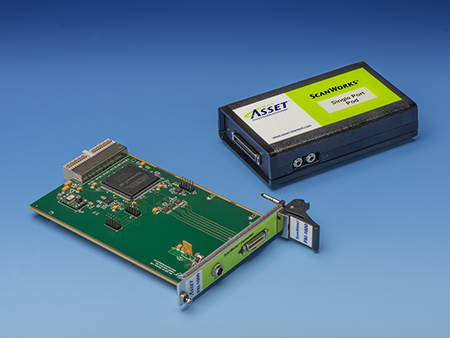PXI is a hardware-based modular test standard. If PXI
users want to add test capabilities, they have to add another hardware module
to a PXI card cage. Now that’s changed with the new ScanWorks® PXI-1000
controller. Let’s say you have ScanWorks and a PXI-1000 controller and you’re
doing boundary-scan test (IEEE 1149.1 and 1149.6), but you want to detect a
broader spectrum of structural defects so you add another embedded
instrumentation test technology like IJTAG (IEEE P1687 Internal JTAG). No, you won’t
need another PXI-1000 controller. You just expand the capabilities of ScanWorks
and the PXI-1000 that’s already in your PXI chassis takes care of the rest. PXI,
meet embedded instrumentation.
Since PXI was introduced in 1998, it’s built a following
on the manufacturing floor in aerospace and defense, automotive and other
industrial applications. In essence, PXI
is a PC-based PCI bus controller that connects through specialized
synchronization features to the modular CompactPCI backplane in a PXI chassis.
PXI integrates bus timing and synchronization to route synchronization clocks
and triggers internally. PXI is an open industry standard published by the PXI
Systems Alliance, a group of more than 70 companies. The alliance is dedicated
to promoting the PXI standard, ensuring its interoperability and maintaining
the specification. One of the original intentions of PXI was that it would be
easily scalable and expandable as test and measurement requirements changed.
So too is
ScanWorks. The PXI-1000 is easily deployable in a PXI environment. It can be
integrated quickly into a PXI rack and into various test executives like National
Instrument's LabVIEW. There are well documented LabView API interfaces for
ScanWorks.
ScanWorks and
PXI can provide unmatched power in the area of board test and in-system
programming. ScanWorks is a great complement to other PXI instruments insofar
as it can apply test vectors over standard interfaces like IEEE 1149.1/1149.6
boundary scan, IEEE P1687 Internal JTAG (IJTAG) or the IEEE 1500 embedded core
test standard. Or it can automate the execution of built-in self test (BIST)
engines based on instruments embedded in chips, FPGA-based embedded instruments,
processor core-based test routines or IJTAG instruments.
From one ScanWorks PXI-1000 controller in a PXI chassis users are able to test
DDR2 and DDR3 memories, program flash memory, communicate with system monitors
and controllers over SPI and I2C, test high-speed I/O on- and off-board, verify
UART, USB and PCIe interfaces, get pin-level fault location for most of the
interconnects on the board, verify all system clocks, and the list goes on.
Think about what this means for prototype board bring up. Exerting all of these
debug, validation and test capabilities on prototypes means you start debugging
your applications sooner and that gets the prototypes ready for system testing
sooner. The bottom line is you get your product to market faster and with fewer
headaches. What’s more, you’ll be able to shorten the time it takes to write
software-based production test programs for on-board processors and FPGAs, and
enhance the diagnostic messages for quicker repair loops. You don’t have to
just sit around waiting for functional test software to be available. You can start
testing right away with embedded instrumentation. And how about the access and test
coverage you’ve lost from your in-circuit test (ICT) and flying probe testers? ScanWorks
and the PXI-1000 controller get it back for you.
Find out more
about the PXI-1000 and the ScanWorks platform for debug, validation and test. For
for information about the PXI-1000 click here
for product brief and here
for the press release.


